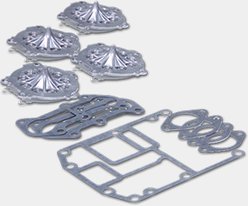This blog is by Mercury Pro Team member Capt. Mike Genoun. An accomplished educator and renowned seminar speaker, Genoun is the host of “Florida Sport Fishing TV.” He runs a 39-foot SeaVee® powered by triple Mercury 400hp Verado® outboards.
High-speed wahoo fishing is arguably one of the most exciting offshore fishing opportunities there is. We’re targeting large game fish capable of lightning-fast speeds with a surgically sharp bite that can severe tuna. As apex predators and such capable opponents, it’s no wonder wahoo are known as the “cheetah of the sea” and considered an ultimate catch.
Successfully catching wahoo requires dedication and serious tackle. Any weak link from line to leader to lure and you can forget about finding, fooling and landing these beauties.
My preferred approach for targeting wahoo in my Mercury-powered SeaVee® 390 is to pull a spread of large, deep-diving plugs at 10 to 12 mph. Ideal conditions occur just before or after a full moon, with light winds and a slight chop.
I’ll deploy a four-rod pattern with each outfit rigged with size-30 two-speed big-game reels and 65-pound-test braid that alternates color every 50 feet. The colored line takes the guesswork out of precisely positioning lures so they’re staggered behind the boat in both distance and depth.
The reels are paired with 6-foot, 6-inch, 50- to 100-pound-class bent-butt trolling rods built with oversized roller guides to accommodate wind-on leaders. On each setup, I use an Alberto knot to connect a 30-foot, 100-pound-test monofilament top shot to the braid. I finish each setup by adding 48 inches of 220-pound-test monofilament leader, which is connected directly to the lure with a crimp. To connect the leader, I crimp on a 200-pound-test ball-bearing swivel. You can see how all the components come together in the video below.
To achieve maximum depth in the water column, connections must be stealthy and streamlined. I make it a point to avoid bulky snap swivels that create resistance and could potentially catch grass. All my crimps are tight with tag ends trimmed clean.
Finally, I constantly monitor and adjust my drag setting based on conditions, including direction of travel up-sea or down-sea. When you do hook up, it’s important to avoid any slack line while fighting fish. Wahoo are notorious head shakers and renowned escape artists.
While the details to successful wahoo fishing may sound daunting, I promise that once you’re dialed in to this effective and efficient spread, you'll soon be ready to haul trophy ’hoos over the side while screaming Wahoo!



















